Menu

More books on:
• environmental health
• food sovereignty
• ecofeminism
• peace and war
• globalization
• struggling against the odds
• others
Selected titles:
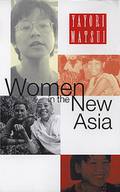
- "Women in the New Asia," by Yayori Matsui
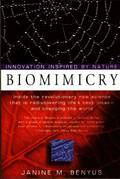
- "Biomimicry," by Janine Benyus
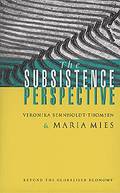
- "The Subsistence Perspective," by Maria Mies & Veronika Bennholdt-Thomsen
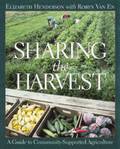
- "Sharing the Harvest," by Elizabeth Henderson with Robyn Van En
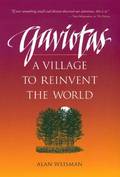
- "Gaviotas," by Alan Weisman
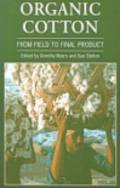
- "Organic Cotton," by Dorothy Myers & Sue Stolton
Seeking solutions
Women in the New Asia
From Pain to Power
Yayori Matsui
Zed Books, London 1996
194p. ISBN 1 85649 626 0 Pb
What impact has the rapid economic development of Asia had on women?
Why is Asia still home to the largest number of impoverished women?
How does the feminization of poverty, one of the most urgent issues facing the continent, actually take place?
This remarkable book charts the effects of the economic boom on women across Asia. Yayori Matsui, one of Japan's leading journalists, demonstrates how Asian women are confronting rapid economic development which is accompanied by widespread infringement of human rights. Analysing the lives of women in Japan, Thailand, the Philippines, Taiwan, China, Nepal and Korea, Yayori Matsui explores:
· the impact of globalization - including the feminization of migration and an increase in the trafficking of women
· sexual violence - from the 'comfort' women to child prostitution
· development projects - the cause of mass deforestation and displacement of communities
However she also describes women's credit co-ops, democratization movements and unionization of women workers. She meets women who have organized anti-logging blockades, literacy classes and campaigns against trafficking. She finds women across Asia resisting the dictatorship of development, the feminization of poverty and patriarchal values. Throughout the continent, she finds the seeds of hope for a new Asia. - cover text
This book is well-written and easy to read, with many examples and women's stories from the author's travels. A good introduction to the vibrant, diverse and important Asian women's movement.
Biomimicry
Innovation inspired by nature
Janine Benyus
Quill (William Morrow & Co.) NY 1997 308p. ISBN 0-688-16099-9
US $13.00 (CAN. $16.95)
It is a rare writer who explains highly technical information to 'normal folk,' with style and humour too. That is what science writer Janine Benyus does, and more. She describes a new - and so ancient - approach to solving major world problems such as growing food without poisoning earth and water, harnessing energy for the future, finding cures to disease. The trick? To "mimic" nature, seeing and learning how natural systems work, then adapting the lessons learned. For example she urges learning from traditional healers whose knowledge of the powerful medicines of their eco-system has been accumulated over millennia, and even watching animals to see what plants they seek out for cures. She offers four steps to a biometric future that are "part studentship and part stewardship - studying nature's wellsprings of good ideas, and then protecting them so that they can continue to flow." They are:
"Quieting: Immerse ourselves in nature.
Listening: Interview the flora and fauna of our own planet.
Echoing: Encourage biologists and engineers to collaborate, using nature as model and measure."
These steps are presented with examples, research and practical information. Together they offer a theory for progressive development for humankind in concert with the natural world, of which we are inescapably part.
The Subsistence Perspective
Beyond the Globalised Economy
Maria Mies and Veronika Bennholdt-Thomsen
Translated from the German by Patrick Camiller, Maria Mies and Gerd Weih
Zed Books, Spinifex Press, 1999
246 p. ISBN 1-85649-776-3 (paper)
Rather than the endless accumulation of wealth, the aim of the subsistence perspective is happiness, quality of life and human dignity.
A work of history, theory and praxis and a product of twenty years of analysis and activism, this unique book poses a radical alternative to the current globalised, free market industrial system. The authors call instead for a new economics and politics based on a subsistence perspective.
They explain subsistence as empowerment based on peoples' own strengths and their cooperation with each other and with nature. Rather than the endless accumulation of wealth, the aim of the subsistence perspective is happiness, quality of life and human dignity. The authors show how such a perspective is not only necessary today but (is) already practised in diverse forms in both North and South: in urban as well as in rural areas...
Particularly in the South, movements for the reclaiming of subsistence are often led by women. Subsistence struggles not only contribute to the economic independence and personal empowerment of these women, the authors also demonstrate how they follow a different and more effective concept of politics from that pursued by many western feminists. In their analysis of recent feminist politics the authors show how the fight for equality with men has not only distorted the early goal of feminism, namely the fight against patriarchy, but has also significantly failed to make a truly egalitarian society and has ended up in the depoliticised dead-end of postmodernism.
Concluding with a call for a new politics based on the view from below, this book poses a powerful alternative to the top-down ideology of development politics. Filled with illustrations of the subsistence perspective in practice, from Africa, Latin America and Europe, the book as a whole brilliantly demonstrates how development only works when it is done from the bottom-up. -- cover text
Sharing the Harvest
A Guide to Community Supported Agriculture
Elizabeth Henderson with Robyn Van En
Chelsea Green Publishing Company, White River Junction, Vermont 1999
254 p. $24.95 ISBN 1-890132-23-2
Community Supported Agriculture is a connection between a nearby farmer and the people who eat the food that the farmer produces. Robin Van En summed it up as "food producers + food consumers + annual commitment to one another = CSA and untold possibilities." The essence of the relationship is the mutual commitment: the farm feeds the people, the people support the farm and share the inherent risks and potential bounty.
This inspirational and practical partnership between farmers and consumers has untold benefits. Money, jobs, and farms are kept in the community. Children grow up knowing how food is grown, and delight in eating fresh-off-the-vine tomatoes and greens and beans. Members with a great diversity of incomes and cultural backgrounds can transform their food-buying and eating habits. The interdependence between small-scale growers and loyal consumers takes us back to the past, as it also takes us forward to a new way of seeing the world.
This book is a hands-on, working manual, providing encouragement and practical advice to everyone interested in community supported agriculture. It is a terrific resource both for those new to the concept, and for seasoned farmers and advocates. You can refer to a specific chapter or you can study the whole book. There are first-hand accounts, sample budgets, share prices, crop selections, descriptions of all-farm workdays and celebrations. There are explanations of how CSAs contribute to a secure food supply and creative land stewardship, while strengthening the fabric of local communities. For farmers and consumers, as well as policy-makers, this book is compelling.
From the Goranson Farm in Maine:
"Community Supported Agriculture provides a mutually beneficial arrangement between farmer and community. In exchange for financial support in the spring from the 'shareholders,' the farmers commit to provide healthy, locally grown food throughout the growing season. The goal of the CSA is to reconnect people with the land and where the food they eat is grown, and they can learn to understand the complexities of providing this food. Joining a CSA leads to a greater awareness of our interdependence on one another and the land. It helps ensure the survival of rural life. Our farm has the ability to grow and provide food for a number of families while pursuing proper land stewardship. It is through the cooperation between farm and community that a sustainable food supply will become a reality."
The concept of community supported agriculture is highly adaptable, and CSAs show a wide range in their age, membership size, production methods, and involvement with the larger community. Most are less than a generation old, in the US and Canada, with shares varying from 3 to 800. Some are an extension of one farming family's operations, some have been started by people new to farming. Most are organic or Biodynamic, and most produce food for other markets - farmers markets, stores or restaurants - in addition to their membership. Members can pick up their share of the harvest at the farm, or they may have it delivered. "Like grapes or garlic, CSA takes on the flavor, bouquet, and integrity of where it grows, becoming appropriately adapted to each unique situation."
From Arctic Organics in Alaska:
"Community Supported Agriculture is an answer to what is becoming a worldwide concern: the production and distribution of high-quality, carefully produced food. By joining a CSA program you are supporting your food producers directly by avoiding the middlepeople (i.e., the distributor and retailer). You are purchasing organically and locally grown produce, thereby avoiding the high environmental and health costs and questionable merits of agricultural chemicals and the fossil fuels and other resources necessary for shipping it long distances. In exchange, you receive high-quality, nutrient-rich, flavorful produce on a weekly basis, freshly harvested the same day it's delivered."
From Winter Green Community Farm in Oregon:
"In many ways, the most important reason for any of us to be involved with the Community Farm is that it is an affirmation of the kind of world we want to live in. It is a positive choice for the future."
Author Elizabeth Henderson sums up the importance of CSA in this way: "Growing food is the most basic use of the natural resources of the Earth, and through food production, we make our own working landscapes. How each society or nation produces and distributes food in large measure determines its identity."
No matter what your background, you'll find "Sharing the Harvest" broadens your perspective about food production and consumption in a hopeful and supportive way.
--- review by Bonnie Acker, herself a working member of a CSA farm in northern Vermont
Gaviotas
A Village to Reinvent the World
Alan Weisman
Chelsea Green Publishing Company, White River Junction, Vermont, 1998
6 x 9 232 pp., hardback maps, photos, diagrams U.S.$22.95 / CAN $32.95 / UK ÂŁ15.50
ISBN 1-930031-95-4
http://www.chelseagreen.com
"In 1971, a group of Colombian visionaries and technicians, reasoning that surging populations must someday learn to inhabit even the world's harshest regions, decided to prove they could thrive in one of the most brutal environments on earth: their country's barren, rain-leached eastern savannas. Despite the constant threat of Columbia's political turbulence, this is now the setting for one of the most hopeful environmental success stories ever told."
"For nearly three decades the scientists, artisans, rural peasants, ex-urban street kids, and Guahibo Indians living in the village called Gaviotas have elevated phrases like sustainable development and appropriate technology from cliché to reality. Sixteen hours from the nearest major city, they invented windmills light enough to convert mild tropical breezes into energy, solar collectors that work in the rain, soil-free systems to raise edible and medicinal crops, solar "kettles" to sterilize drinking water, and ultra-efficient pumps to tap deep aquifers - pumps so easy to operate, they're hooked up to children's seesaws." (publisher's notes)
Organic Cotton
From Field to Final Product
Edited by Dorothy Myers and Sue Stolton
Intermediate Technology Publications Ltd. 103-105 Southampton Row,
London WC1B 4HH, UK
272pp. ISBN 1 85339 464 5 Feb. 1999, ÂŁ 14.95, US$ 25, DM 45
Organic agriculture is gaining ground rapidly and organic cotton provides important environmental, economic and social benefits compared with conventioanl cotton production. Commercial organic cotton is a new area of activity -- barely ten years old -- and research and analysis are still at an early stage. This book provides the first overview of organic cotton production, processing and consumption for everyone involved with cotton. The book is organized according to the stages in the 'cotton chain', from farmer to consumer, and covers each topic authoritatively with contributions from more than 50 people in 20 countries.
Dorothy Myers is an International Project Officer for the Organic Cotton Project at the Pesticides Trust.
Sue Stolton is Co-Director of Equilibrium Consultants and has worked within the organic movement for many years, most recently with the International Federation of Organic Agriculture Movements (IFOAM).
To order: orders(at)itpubs.org.uk

